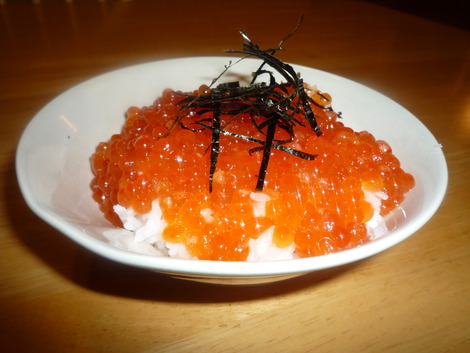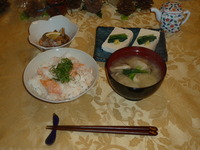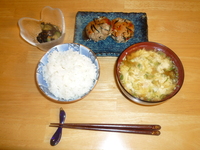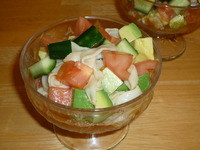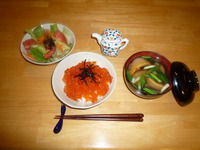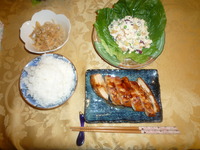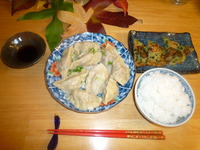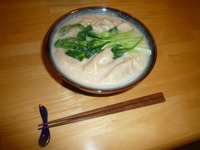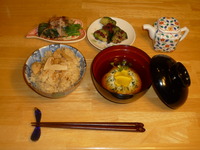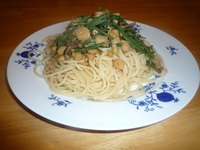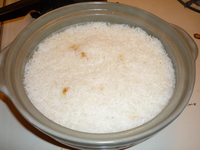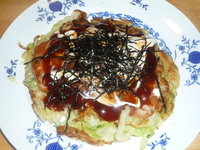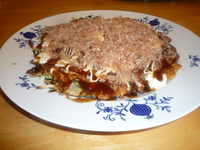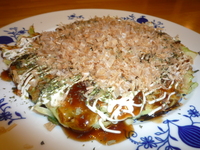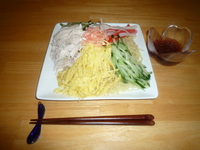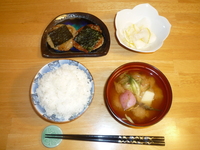Monday, January 24th, 2011
What could be better than a decadent meal that takes no time at all?
My friend's brother goes fishing in Alaska every year to catch the almighty Alaskan King Salmon. And we're not talking about a little trip to the lake. He goes with his guy friends and live in a dirty man cave for five weeks, all the while catching thousands of pounds of salmon. It's quite the trek. Anyhow, my friend and her brother were nice enough to give me some of this salmon. It's currently in the freezer while I devise ways to cook it. In addition, (such great friends) they gave me some ikura (salmon roe). The ikura, on the other hand, was from some ikura company that specializes in ikura. How wonderful don't you think? Iikura wa ikurademo taberareru. (I can eat endless amounts of ikura.) Ahahaha it's a play on words. This is where my Japanese friends slap me over the head with a slipper and say "Samui." (Samui literally means cold but in this case it means "that's not funny.") I think ikura is one of those things that people love or hate. To those of us who love it, they're like beautiful reddish orange beads of decadence that pop with flavor in every bite. The pop is probably what people who don't like ikura hate about it.
This recipe is simple because as long as you get fresh ikura, there isn't much you have to do. Spend your extra time making a nice osumashi (clear fish broth soup). (See
Tofu, Kamaboko, and Carrot Osumashi or stay tuned for my shitake and green onion osumashi.)
In the future, I'll post a video on how to pull the ikura off the suji (the sack that holds all the eggs). FYI, sujiko is salmon roe still in the sack which has been salted. Ikura is salmon roe that has been removed from the sack and is separated into individual eggs. It is then seasoned with soy sauce and sake. You can buy already seasoned ikura in Japanese supermarkets. I would taste it to see how much of the soy sauce it has absorbed and adjust the seasoning accordingly. If you have fresh salmon roe that has not been doctored, the standard marinating time after the eggs have been separated is 2-3 days. If you want it to be fast and easy, just get the prepared ikura and add a little soy sauce and sake and let it sit for a little until it has absorbed some of the sauce.
Ingredients (servings 2-3)
3/4 cup ikura
2 tsp. sake
1 tsp. soy sauce
Japanese rice (2 + 1/4 cups dry rice. Just in case you go back for seconds.)
nori (seaweed) for garnish
Directions
1) Marinate the ikura with the sake and the soy sauce ahead of time. (2-3 days if it is not already seasoned but 20-30 minutes is acceptable if the ikura is already seasoned. In this case start marinating before you start the rice .)
2) Cook the rice. (See
electric rice cooker or
stove top rice for directions)
3) Top a hot steaming bowl of rice with 1/4-1/3 (or half but I guarantee you'll be going back for more rice) of the ikura and top with nori strips for garnish. Drizzle extra soy sauce as needed. And TA DAH! Decadence on the go!
BAM 40: Ikura don, shitake and green onion osuimono and salad.
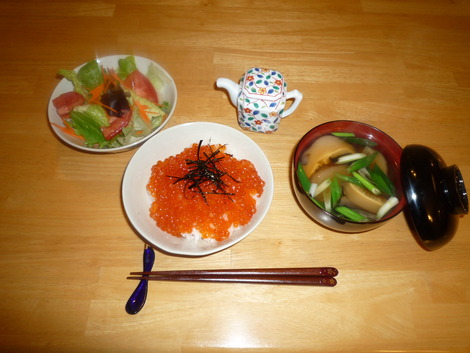
Season the ikura with soy sauce and sake to get rid of any fishiness and brighten up the flavor.
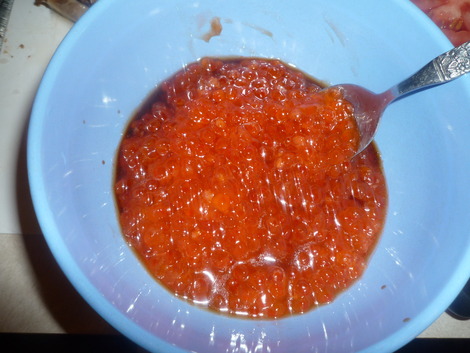
Generously top over hot rice and garnish with thin strips of seaweed.
